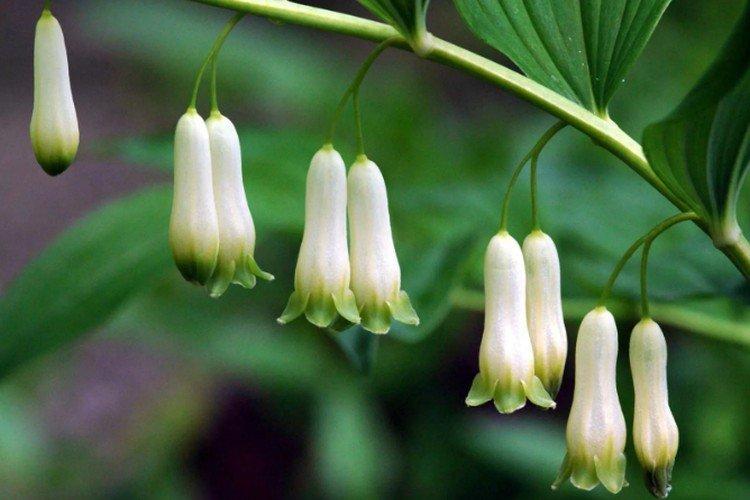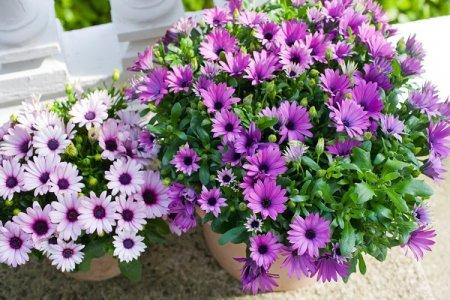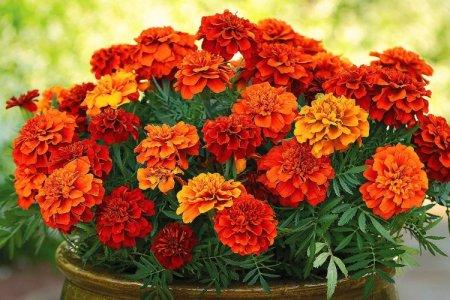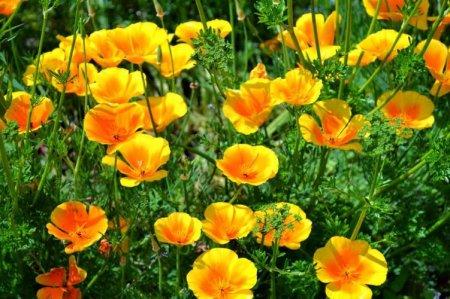
At first glance, a kupen can be confused with a lily of the valley. It has dozens of popular names, including the most unusual and bizarre, such as "wolf's fang" or "Solomon's seal". Today we want to tell you more about this unusual and interesting flower!
general information
On the thin, curved stems of the kupena, there are wide oval-shaped leaves. They are very decorative in their own right, and in May they are joined by adorable white bells. Under favorable conditions, bright berries are then formed from them, but keep in mind that they are poisonous.
Kupena has a very interesting root system. This type is called articular, and by this name it is easy to imagine its structure. The roots do not go deep, but grow almost horizontally and gradually lignify.
In autumn, the stems of the kupen die off and leave a rounded scar. A new shoot grows the next year from a new bud. Kupena is a perennial, and it is believed that the easiest way to find out the age of a particular plant is to count these scars.
In folk medicine, kupena refers to medicinal plants. It is used to heal wounds and bruises, as a pain reliever, and to treat coughs. But we do not recommend experimenting due to toxic substances in all parts of the flower!

Types of purchased
There are many types of kupena, but we have collected the most decorative ones. After all, I would like the garden to always delight with beauty!
Fragrant Kupena
The tall species grows to almost 1 m, and the large lanceolate leaves are bluish. Fragrant flowers are slightly serrated along the edges of the petals.

Broadleaf bush
The compact bush up to 50 cm has a very impressive wide foliage. In a dense group planting, the leaves are even more spectacular than the buds collected in small bunches.

Kupena Pratty
Not the most common, but very decorative type with dainty purple bells. They are collected in racemose inflorescences and look even brighter against the background of light, slightly silvery leaves.

Multi-flowered bush
Depending on the region and conditions, it can be very tiny or quite an impressive meter-long bush. This species blooms a little later, most often in June. There are decorative varieties with variegated leaves.

Whorled kupena
Whorls are small palms of leaves at the ends of the shoots. In this kupena, they are assembled from 4-8 narrow and pointed sheet plates. The height of the bush is up to 60 cm.

Crescent tuber
It can be recognized by the presence of a slight edge on the leaves. The flowers are the same, white-green, but the fruits after them are darker, almost black.

Low buy
She is squat, and, as you might guess, this is a dwarf species. The average height of the bushes is about 15-30 cm, and at the same time rather large buds bloom on them. There are varieties with a pinkish tint.

Bath care
Kupena is difficult to plant and propagate, but in further care it is completely unpretentious. If the bush has already taken root and has grown, it is very difficult to harm it.
Temperature
They have many specific temperature requirements for germinating seeds, which we will talk about later. Otherwise, she feels great even in the northern regions of Russia.

Lighting
Kupena prefers partial shade or even completely shaded areas. Aggressive sun rays are destructive, cause burns and dry out the plant.

Watering
You need to water the compartment according to the weather. On very hot days - more often, on cool days - less often. We recommend mulching the soil a little so that the soil retains moisture longer, and also so that you do not have to loosen it often, otherwise this is dangerous for the root system.

The soil
The soil for kupyna must be fertile, and in general, this is enough. Make sure to drain the holes well during planting in case of heavy rains.

Fertilizers and feeding
Too much feeding is not needed. And if the soil is nutritious, it is generally enough to apply fertilizer just once in the spring. If the soil is poor, feed the kupena a second time during the flowering period.

Weeds
Young bushes are bought very sensitive to weeds, so the first few years of planting must be weeded. But adult plants themselves are able to defend their territory.

Pruning
The purchase does not need special trimming. Moreover, you cannot cut off the leaves immediately after flowering, because the rhizome will not be able to stock up on nutrients. But the peduncles can be removed if you do not need seeds.

Wintering
Kupena is frost-resistant enough to easily survive the winter without problems. With the onset of cold weather, the ground part dies off on its own, and it can be cut off. In the northern regions, we recommend mulching the kupena with leaves, sawdust or peat.

Planting and breeding
It is difficult and long to grow Kupena from seeds, but then they sprout very amicably. Preparation begins in a month: this is stratification and about 4 weeks in the refrigerator. After that, the seeds must be planted in peat with sand, and again removed in a cool place for 3 months. The temperature should not exceed 5-6 degrees.
Then you need to move the container to heat for a short time, and then put it back in the cold for another 1.5 months. Finally, leave again warm at 20 degrees, diffused light and with regular watering. And only then, closer to summer, seedlings can be planted in the garden. Keep in mind that the kupena is very slow, so it develops slowly, and will bloom in at least 3 years.
A simple and quick household method is reproduction by division. At the end of summer (but not in spring!), The tall bushes were stripped into several parts with separate growth points and seedlings into separate lenoks to a depth of 8 cm.
Despite the fact that the purchase is small, do not plant the bushes closer than 20 cm from each other. They multiply quickly on their own. Mulch the planting and wait, somewhere in 1-2 years the bushes will gain strength. After work, be sure to wash your hands of toxic juice.

Pest and disease control
Kupéna has a fantastic immunity to disease. If you choose healthy seed, do not overfill the planting and do not turn the soil into a swamp, the risk of problems is practically nonexistent. But juicy leaves are very fond of slugs, snails and other insects. Gently rinse the plants with mild soapy water, remove large pests by hand, and treat the flower bed with insecticides.

Kupena - photo
Kupena is an amazing flower. It is very simple and very effective at the same time. And a clear confirmation of this is our photo gallery!

























